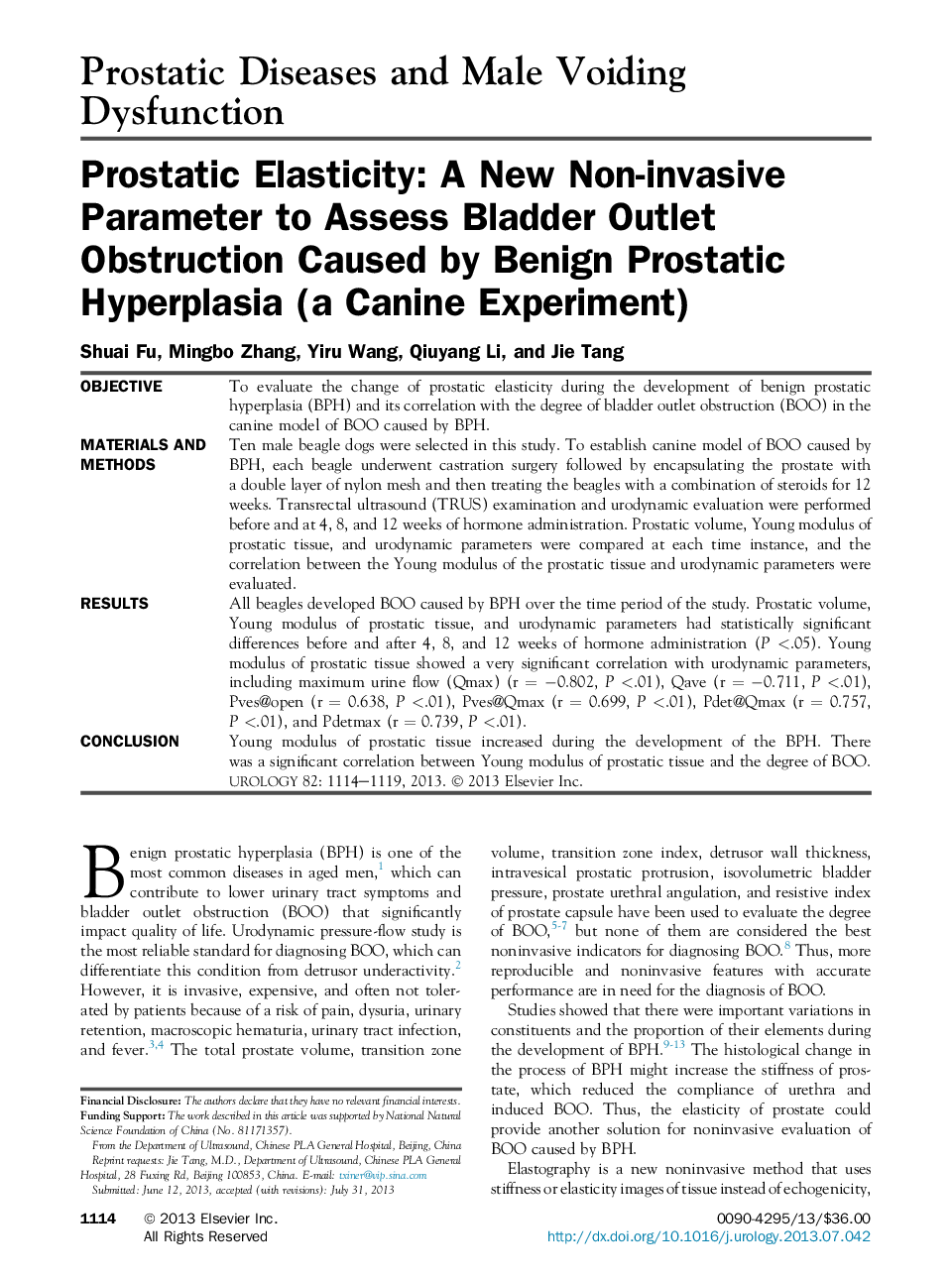| Article ID | Journal | Published Year | Pages | File Type |
|---|---|---|---|---|
| 3899238 | Urology | 2013 | 6 Pages |
ObjectiveTo evaluate the change of prostatic elasticity during the development of benign prostatic hyperplasia (BPH) and its correlation with the degree of bladder outlet obstruction (BOO) in the canine model of BOO caused by BPH.Materials and MethodsTen male beagle dogs were selected in this study. To establish canine model of BOO caused by BPH, each beagle underwent castration surgery followed by encapsulating the prostate with a double layer of nylon mesh and then treating the beagles with a combination of steroids for 12 weeks. Transrectal ultrasound (TRUS) examination and urodynamic evaluation were performed before and at 4, 8, and 12 weeks of hormone administration. Prostatic volume, Young modulus of prostatic tissue, and urodynamic parameters were compared at each time instance, and the correlation between the Young modulus of the prostatic tissue and urodynamic parameters were evaluated.ResultsAll beagles developed BOO caused by BPH over the time period of the study. Prostatic volume, Young modulus of prostatic tissue, and urodynamic parameters had statistically significant differences before and after 4, 8, and 12 weeks of hormone administration (P <.05). Young modulus of prostatic tissue showed a very significant correlation with urodynamic parameters, including maximum urine flow (Qmax) (r = −0.802, P <.01), Qave (r = −0.711, P <.01), Pves@open (r = 0.638, P <.01), Pves@Qmax (r = 0.699, P <.01), Pdet@Qmax (r = 0.757, P <.01), and Pdetmax (r = 0.739, P <.01).ConclusionYoung modulus of prostatic tissue increased during the development of the BPH. There was a significant correlation between Young modulus of prostatic tissue and the degree of BOO.
